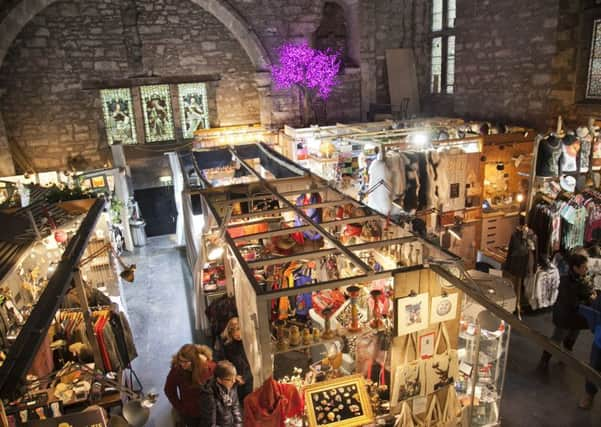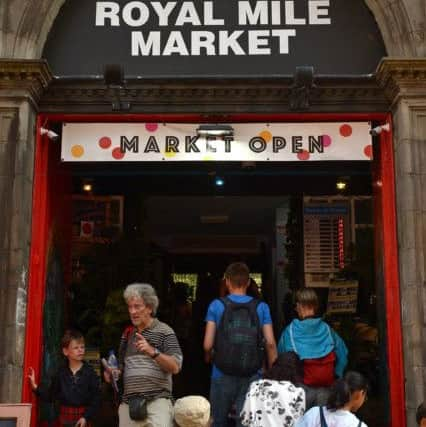Traders' shock at sudden closure of Tron Kirk indoor market


The historic Tron Kirk is to become a heritage centre for Edinburgh’s Old and New Towns.
The city council has agreed to give Edinburgh World Heritage (EWH) a three-year lease on the A-listed building in the Royal Mile – and the new centre could open as soon as June.
Advertisement
Hide AdAdvertisement
Hide AdThe plan is to showcase the history and architecture of the Capital’s world heritage site, along with a shop to fund the project.


Longer term, EWH proposes a complete refurbishment of the building.
The Tron Kirk Royal Mile Market, operational for the past two years, is Edinburgh’s only permanent, seven-day, indoor marketplace and is home to more than 15 local businesses, artists, designers and jewellers.
It employs dozens of locals on top of providing a unique shopping destination and tourist attraction. But traders and staff now face an uncertain future.
Advertisement
Hide AdAdvertisement
Hide AdFrances Durack and her husband run a stall in the market making their own jewellery and leather crafts.


“The market’s closure is felt deeply by us all. After months of making it work, it finishes,” she said. “There are already many tourist shops on the Royal Mile, but the market offers something different – small businesses and hand-made products.
“Living and working in Edinburgh is becoming much harder, so we’re considering moving from the city.”
Jane Edgell designs and prints her own T-shirts and agrees the closure is devastating. She said: “It’s tragic not only for traders and staff, but also for tourists and for the city. The market brought individuality and uniqueness; without it, there are only dozens of tourist shops selling the same repetitive products, which even the tourists complain about.”
Advertisement
Hide AdAdvertisement
Hide AdDésirée Marie Townley, visiting from Rome, said: “I was delighted to find this market on my trip to Edinburgh. I travel frequently, and only shop in hand-made or vintage stores and I’ve visited this market daily during my holiday. Markets like this are important to the community they employ, and the consumers who shop there.
“It’s disappointing this market is closing. It may seem like a small change, but it speaks volumes about the city of Edinburgh to disregard the larger impact.”
The Edinburgh Bow Tie Co. makes and sells a range of luxury men’s accessories, all hand-made in a Leith studio.
Founder Hannah Carpenter said: “The closure of the market is very upsetting.
Advertisement
Hide AdAdvertisement
Hide Ad“Last year we ran a petition gaining over 11,000 signatures against its closure. Even with support from both tourists and residents, the council didn’t vote in favour of the market remaining in the Tron Kirk. Edinburgh High Street is saturated with tartan gift shops, and I believe this is a sad representation of a creative, exciting city. It’s devastating for our small businesses.”
Stuart Ramsay, director of Tron Tourist Services Ltd, added: “I’m disappointed in the decision to grant Edinburgh World Heritage Trust up to a three-year lease on the Tron Kirk, considering they have had an option on the building for the last five years and failed to raise finance for a suitable regeneration project. “Even although the Royal Mile Market had offered nearly four times as much in rental income for the city, plus the benefit of securing 150 jobs, Edinburgh World Heritage got the single extra vote needed whilst claiming that it’s easier to secure funding when they have secured tenancy.
“Yet with Lottery money seemingly a non-starter and EU grants unlikely given Brexit, it puts more pressure on UK grant sources. Perhaps it’s time the Council consider reinvesting the rental income into a ‘heritage fund’ on which to finance the regeneration of such buildings, especially with Edinburgh having the largest number of listed buildings in the whole of the UK and Ireland.
“This was a chance for the City Council to champion small and local business, where they could have extended the lease for the market traders, makers and designers until such times as the building’s lease went on the open market and we could submit a formal bid.
Advertisement
Hide AdAdvertisement
Hide AdWith Edinburgh the second most visited city in the UK after London, surely tourists deserve better than miles of identical, imported, tartan tat merchandise.
Adam Wilkinson, director of Edinburgh World Heritage said: “This is an opportunity to tell the story of Edinburgh’s World Heritage Site to residents and visitors alike, and is a first step towards creating a sustainable future for a building which is currently at risk.”